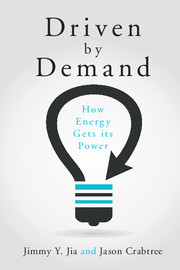Book contents
2 - Energy: the product
from Part II - Three frameworks
Published online by Cambridge University Press: 05 June 2015
Summary
If you want to find the secrets of the universe, think in terms of energy, frequency and vibration.
Nikola TeslaA fireplace releases heat into a cold room. An escalator brings a person up a flight of stairs. A glowing bulb provides light energy in a dark corner. Each of these examples describes a different form of energy: heat, motion, and light. They also subtly point to an important property of energy. Practical discussions about energy require context or a comparative. The cold room relates to an assumed context based on our human experience. Likewise, our experience allows us to visualize and relate to the energy-related actions of climbing a staircase or the illumination of a once-dark corner. The context is defining. Context informs us whether the energy is useful or not useful. A fire in a cold room sounds pleasing, while the same fireplace emitting heat in the middle of a Texan summer sounds miserable, if not hazardous. A fire by itself with no context of the energy environment is largely meaningless.
Practically speaking, energy exists only in comparison with something else. For more complex, real-world energy decisions, this same principle often applies. The context of energy consumption is critical to understanding whether or not to pursue a particular technology or process change. The same “solution” may be perfect in one situation and a disaster for another. In order to understand energy as a product, it is always important to begin by examining the ultimate purpose for an energy transformation and the environment in which it is being consumed.
Energy and power are not equivalent
Energy is frequently confused with power. Formally,
Energy = Capacity to do work
and
Power = Rate of work being done OR energy flow per unit of time
A deeper look is warranted.
Energy is used to perform work. It is most frequently measured in calories (cal), joules (J), British thermal units (BTUs), kilowatt-hours (kWh), and others.
- Type
- Chapter
- Information
- Driven by DemandHow Energy Gets its Power, pp. 13 - 23Publisher: Cambridge University PressPrint publication year: 2015

